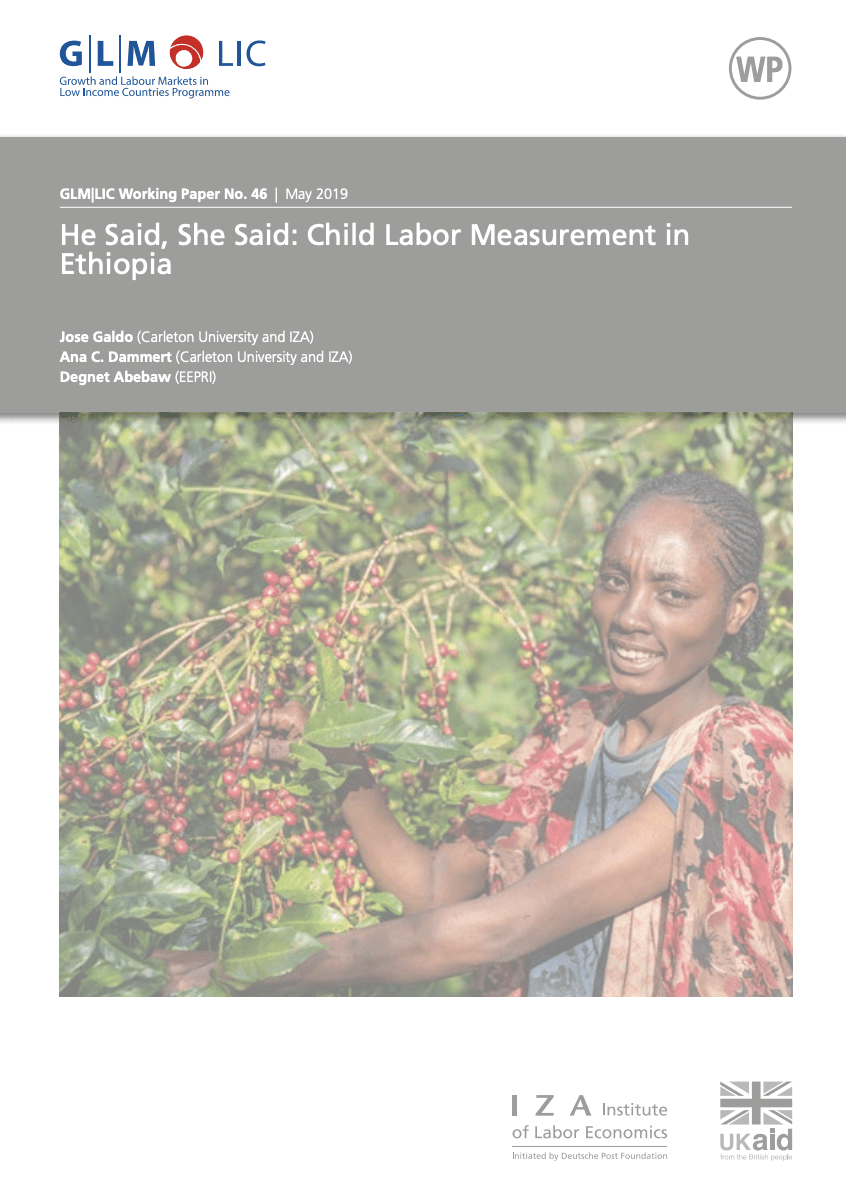
He Said, She Said: Child Labor Measurement in Ethiopia
Introduction
Child labor continues to be an economic necessity for many households, especially poor households in developing countries. The International Labor Organization (ILO) estimates that 218 million children ages 5 to 17 were engaged in an economic activity around the world in 2016, mostly in developing countries. Over 73 million of these children were engaged in hazardous and exploitative forms of child labor. The agricultural sector accounts for by far the largest share of child labor (70 percent of those in child labor), where most children are engaged in family farm activities (ILO 2017). Accordingly, the measurement of child labor is essential to our understanding of the main factors that drive children to work and the development of sound policy in agricultural areas.
Despite the increasing availability of sources of information on child labor, and a large body of research on its main determinants and the effects of social protection policies (Edmonds 2009; Basu and Tzannatos 2003; Dammert et al 2018), there is little evidence on the validity of data collection methods for child labor (Dillon et al 2012). Three overlooked features in child labor survey design and data collection deserve attention. Unlike adult work statistics, child labor statistics are mainly generated by proxy reporting. Proxy reporting could lead to attenuation bias in child labor statistics due to social and cultural values or asymmetries of information due to the gendered segmentation of labor markets. Moreover, the timing of the survey is important as the seasonality of the household production process is an important component of the demand for child labor in agricultural settings. While there is a growing body of work on the impact of seasonality on rural labor markets (e.g. Beegle et al. 2017), there is scant evidence on how seasonality may affect the measurement of child labor statistics (Guarcello 2010). Furthermore, the gender stratification of work and social lives in poor economies could lead to important information gaps in child labor measurement. In East Africa, for instance, child’s work is seen as an extension of women’s work (e.g., Bass 2004), which could lead the work of girls to be unaccounted because their work is directed by women but reported by male heads of households.
This paper contributes to the literature by examining the extent to which seasonality and reliance on the head of household as proxy respondent affect child labor statistics in rural Ethiopia. Specifically, our experimental survey design intervention consists of the random manipulation of the survey respondent in the application of the same survey instrument to 1200 Fairtrade households in three different seasons of the coffee production, which enable us to capture seasonal variation in the demand for child labor. A component of the household survey elicits information about the specific farm and non-farm labor activities of children. In some households, children are randomly selected as respondents, while in others the head of households are randomly selected as respondents. We conducted the same survey experiment during the Meher season (main rainy season), the Belg season (short rainy season) and the harvest season. By interviewing the same households in different seasons of the agricultural calendar, we incorporate into the analysis the fact that rural households’ demand for child labor differs during the pre- and post-harvest seasons.
